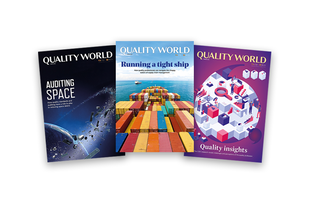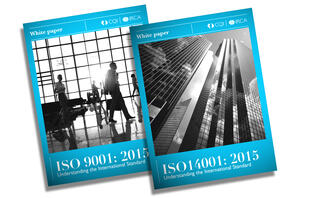
The context of the organisation
Progress indicator

Bob Hughes, CQP FCQI, managing director of Temple Quality Management Systems, explains why understanding the organisation and its context offers the management team an opportunity to reflect on its successes.
Many businesses are apprehensive about the new requirement in ISO 9001:2015 – clause 4.1 ‘Understanding the Organization and its Context’. However, management teams should think of this new requirement as a fantastic opportunity to reflect on the organisation’s positive achievements and successes. Businesses should always write down their accomplishments, build on them and be positive about the opportunities that have been created.
The clause requires businesses to determine external and internal issues that are relevant to its purpose and its strategic direction. Issues that affect the organisation’s ability to achieve the intended results of its quality management system should also be noted.
The concept of identifying the internal factors can also help an organisation engage with its staff and build a multi-disciplinary approach.
By focusing on the internal and external factors that affect an organisation’s approach to its products, services, investments and interested parties, the business can set a specific strategic direction for the future. This will allow the organisation to create a positive approach to embedding the quality concept throughout. As a result, quality will be at the heart of the organisation before the auditor has even turned up to complete an assessment, rather than being an after-thought.
The concept of identifying the internal factors can also help an organisation engage with its staff and build a multi-disciplinary approach. This will allow staff to take on responsibilities and take control of implementing improvements. Internal factors can include issues related to values, culture, knowledge and performance of the organisation.
Launching a product or service without due care can add cost rather than add value.
Consider credit notes. I have been to two organisations recently where it was openly admitted that the true cost of credit notes was not known. They had failed to communicate to the people within the business that had created them and there was no ownership in sign off.
In terms of statutory and regulatory requirements, another possible area for organisations to improve is within contract review/feasibility. Businesses should consider how contracts are processed and the risk of not effectively managing feasibility. Launching a product or service without due care can add cost rather than add value.
The new requirement also requires quality professionals to reflect on external factors that can have a negative and positive impact on their organisation. External factors can include issues arising from legal, technological, competitive, market, cultural, social and economic environments, whether international, national, regional or local.
By gathering this information, quality professionals can look at what the organisation does with regards to its products and services, and assess the risks and opportunities.
Establishing a risk management plan can help quality professionals establish a quality management system that supports the delivery of results and ensures the new standard delivers change.
Reviewing the information regularly is also important and quality professionals should continuously monitor the organisation’s internal and external factors. By doing this, quality professionals will be able to identify areas that need improvement and adapt to any external issues.
Member only

This article is free to access for a limited time only. Only CQI and IRCA members receive access to all content.
Get the latest ISO reports and resources

Our many reports and resources will help you achieve a smooth transition to ISO 9001:2015 and ISO 14001:2015.